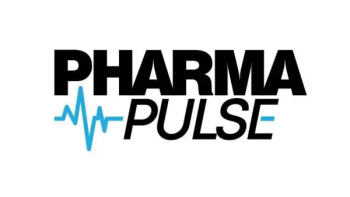
The Ripple Effect of 200% Tariffs on US Drug Supply and Pricing
In the first part of his video interview with Pharma Commerce Editor Nicholas Saraceno, Brad Stewart, BDO’s national life sciences co-leader, describes the immediate and long-term impacts of this potential levy on pharma imports.
In a video interview with Pharma Commerce, Brad Stewart, BDO’s national life sciences co-leader, describes how a proposed 200% tariff on pharmaceutical imports could have significant short- and long-term impacts on US drug manufacturing and distribution, with immediate concerns focused on the stability of the generic drug market. According to Stewart, generic drugs make up the majority of medications used in the United States, but they are highly vulnerable to shortages because many become sole-source products after their initial launch. Within a few years of going generic, multiple manufacturers often consolidate into a single supplier due to limited demand and low margins. This leaves the supply chain fragile, as any disruption—such as shortages of active pharmaceutical ingredients (APIs), manufacturing conflicts, or facility issues—can quickly lead to supply gaps. The pandemic underscored these vulnerabilities.
In the short term, Stewart warns that a 200% tariff would exacerbate these challenges by increasing the costs of imported generics, which are critical for maintaining affordable drug access. This could limit availability and raise costs for patients, providers, and insurers, leading to potential shortages and higher out-of-pocket expenses.
Longer term, tariffs of this magnitude would likely drive a rise in overall drug prices in the United States. Companies would have little choice but to pass on increased costs to consumers, insurers, and healthcare systems. While patients might not feel the impact immediately due to insurers absorbing costs, premiums, and healthcare charges would eventually rise.
Stewart emphasizes that reshoring pharmaceutical manufacturing is not a quick fix. Building new manufacturing facilities or scaling domestic production requires a long lead time—typically three to five years—and involves complex regulatory and logistical challenges. As a result, while tariffs may encourage companies to explore onshoring, significant capacity expansion is unlikely to occur in the near term.
Stewart also comments on the internal constraints that nearly a quarter of life sciences CFOs are reporting as their biggest manufacturing obstacle; how artificial intelligence can help support pharma leaders in managing their supply chains; and much more.
A transcript of his conversation with PC can be found below.
PC: What immediate and long-term impacts could a 200% tariff on pharmaceutical imports have on US drug manufacturing and distribution operations?
Stewart: To get to a 200% tariff being implemented and what the impacts would be, I think both short and long term, they're pretty easy to see, and most of them probably don't result in a massive growth in US drug manufacturing in the next several years. That’s something that's very hard to do with drug manufacturing, and we'll talk about why in a minute, but probably in the short term, I think the biggest concern I would have is around generic drugs.
That's really one of the areas that I think people don't realize is probably one of the most unstable parts of drug infrastructure for the United States—generic drugs very commonly these days end up being sole-source medications. For the first six to 12 months that a drug becomes generic, there might be multiple manufacturers, but unless they're incredibly high volume, they tend to become sole source over the first couple of years, and we see what happens now with drug shortages. We saw this quite a bit during the pandemic.
It's not uncommon for a drug—maybe the active pharmaceutical ingredient, or API—to end up in shortage. There's conflict with what else they're trying to manufacture—they can't produce the volume or maybe there're facility issues. I think short term, that's really what I worry about, is just not having access to generic drugs, which are by far the vast majority of the drugs that people in United States take. Long term, longer term, or maybe midterm, it's definitely going to raise drug prices the United States. Companies will probably have no choice but to raise prices with a 200% tariff. That'll start to impact what people pay out of pocket, what they pay for health insurance, what hospitals are charging, those sorts of things.
Maybe you don't see it in your co-payment right away because your insurer is having to absorb that until they raise your premiums in the next benefit season, but I think in the longer term, that's where companies really are going to have to try and figure out if there are opportunities for them to onshore parts of their pharmaceutical production and those sorts of things. As I started to say before, those are very long term, very challenging decisions. These are typically three-plus years to three to five years, probably most honestly, to try and build and open up a manufacturing facility.
Newsletter
Stay ahead in the life sciences industry with Pharmaceutical Commerce, the latest news, trends, and strategies in drug distribution, commercialization, and market access.





